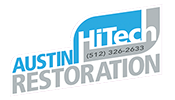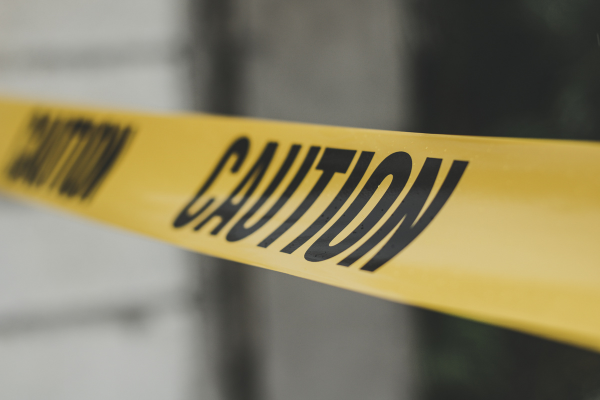When water damage strikes, the clock starts ticking. Most homeowners feel an immediate sense of urgency and are often tempted to take care of the mess themselves. After all, DIY seems like the least expensive way forward. But water damage is more than wet carpets and damp drywall. It holds hidden dangers that can remain unseen until they become expensive or even hazardous. Before grabbing that shop vac and swinging into action, it’s worth understanding what’s really at stake. This article pulls back the curtain on the unseen risks of DIY water damage cleanup and why it might cost more in the long run than calling in a professional.
Why DIY Seems Like a Good Idea
It’s easy to see why many homeowners are drawn to DIY cleanup methods. Water seeps into a basement or leaks through a ceiling, and the first instinct is to mop it up, use a dehumidifier, and call it a day. It’s tempting to think the job is simple: dry out the space, toss the damaged items, and move on. Budget concerns often fuel these decisions. Repair bills can be overwhelming, especially if insurance doesn’t cover the entire incident. Plus, the sheer number of online tutorials can make water damage seem easy to fix without professional help.
But the allure of saving money often overshadows the hidden aspects of water damage. Moisture can hide behind walls, under floors, and inside insulation. Dealing with it incorrectly can set the stage for dangerous outcomes that don’t show themselves until long after the cleanup is complete.
The Mold Threat Lurking Behind Walls
One of the most immediate and dangerous results of water damage is mold. Warm, damp conditions left behind after a flood or leak create the perfect environment for mold spores to grow. What makes this especially hazardous is how mold grows unseen. It thrives behind drywall, under carpet padding, within furniture pieces, and under the baseboards. By the time you see visible spots, mold has usually spread much further.
The health risks connected to mold exposure are often underestimated. People with allergies, asthma, or compromised immune systems can suffer serious respiratory issues that significantly affect daily life. For children and elderly individuals, even short-term mold exposure can cause fatigue, prolonged coughing, and wheezing. The worst part is that many DIY jobs don’t remove all of the affected materials, leading to a recurring cycle of regrowth.
Professional cleanup teams use infrared cameras, moisture meters, and proven techniques to detect hidden mold. They also dispose of contaminated materials safely. When you go the DIY route, there’s no formal inspection, no containment process, and no assurance the problem is actually gone.
Moisture Removal Is More Than Drying
Drying out a room isn’t as easy as opening windows or placing fans around. That’s surface-level drying. Water soaks deeply into wood, drywall, carpeting, and other building materials. While the top layers might feel dry to the touch, trapped moisture continues to damage the structure from within. If not handled correctly, this leftover dampness can compromise your entire home’s integrity over time.
A common DIY mistake is stopping the drying process too early. Just because the surfaces feel dry doesn’t mean hidden moisture has been eliminated. Without industrial-grade dehumidifiers and atmospheric monitoring equipment, it’s difficult to know for sure. Lingering dampness slowly weakens the joints of wood framing, causes paint to bubble, and leads to swelling in floors and doors. All this adds up to higher repair costs later on.
Structural Risks Few Homeowners Consider
Residential construction is complex. Water doesn’t just settle on flat surfaces; it seeps into support beams, compromises insulation, and even works its way into electrical systems. When homeowners clean up water on their own, they typically address what they can see and reach. That leaves many weak points untouched. Wood that stays damp can result in warping, cracking, and in extreme cases, collapse.
Imagine unknowingly leaving a wet subfloor under your hardwood floors. Over time, that moisture combines with gravity and use, causing bowing or gaps. Worse still, dampness compromises the strength of load-bearing walls or basement supports. While some issues take months to appear, they all lead to far more extensive—and expensive—repairs than if the problem was taken care of immediately by professionals who understand building science inside and out.
Health Hazards Beyond Mold
Mold is not the only health issue that can arise from mismanaged water damage. Water brings more than moisture into your home—it often carries contaminants from its source. Grey water from sinks or dishwashers contains bacteria and food waste, while black water from toilets or flood events contains sewage, viruses, and other dangerous pathogens.
Coming in contact with contaminated water can cause gastrointestinal illness, skin infections, or worse. Even cleaning up with gloves on may not offer full protection if droplets are airborne or absorbed through clothing. In a professional setting, techs wear respirators, full-body suits, and use containment barriers to reduce exposure. Without this level of safety, homeowners unwittingly put their health on the line by working in toxic environments with insufficient protection.
The Limits of Household Equipment
Most homeowners own a mop, a wet-dry vacuum, and perhaps a fan or dehumidifier. For small spills, this might be enough. But when you’re dealing with real flooding, appliance leaks, or multi-room damage, household tools simply don’t cut it. Wet-dry vacs remove visible water, but they don’t address moisture in walls, insulation, or flooring layers. Hardware store dehumidifiers lack the power and coverage area for whole-room drying.
In contrast, professionals use air movers, negative air machines, and commercial-grade drying systems. These work together to pull moisture from the air and structure at a much higher efficiency rate. Compact equipment isn’t up to the task when every hour of drying matters. In fact, delayed or incomplete drying creates far greater risks long term. Small tools also can’t detect trapped water that’s actively damaging studs, outlets, or ceiling joists.
Insurance Headaches from DIY Attempts
Insurance companies don’t always look kindly on unsupported claims, especially when homeowners attempt repairs themselves. Documented professional damage assessments carry weight in the claims process. Without one, you may struggle to prove that your home suffered legitimate and extensive damage that warrants reimbursement. Worse yet, improper cleanup efforts can nullify certain coverage policies if they lead to secondary damage.
If mold blooms after a DIY job, your insurer may deny coverage based on improper treatment or negligence. They may argue that delayed reporting or restoration allowed preventable damage to occur. Meanwhile, qualified restoration companies provide thorough reports, photo evidence, and even work with adjusters to verify damages and cleaning efforts. That backing can be the difference between full or partial payout and denial.
Knowing When to Call a Professional
Taking the first step yourself is understandable. But there are clear points when it makes more sense to bring in experienced help. If water soaks through multiple rooms, seeps into walls, or enters through contaminated sources, a professional should be called right away. The presence of visible mold, musty smells, or bubbling paint are also signs your home is suffering issues beyond home-level cleanup capabilities.
It’s also wise to make the call if you don’t have access to commercial-grade drying equipment or mold detection tools. Guessing whether a surface is dry or clean is not worth the lingering consequences. Restoration companies act quickly, come equipped with specialized gear, and follow proven mitigation protocols. You gain not only efficient removal of moisture and contaminants but also peace of mind that repairs won’t fall apart six months later.
How to Choose a Reliable Restoration Team
Not every company offering restoration services has proper credentials. Before hiring, check for industry certifications such as IICRC (Institute of Inspection Cleaning and Restoration Certification). This ensures they follow accepted practices and have undergone training in proper water damage response procedures.
Read reviews and ask for references. Good companies should have a track record of timely arrivals, upfront pricing, and transparent workflows. Avoid those who press for quick signatures or attempt to start work before providing paperwork. Make sure you ask what equipment they’ll use, how they’ll detect hidden moisture, and whether they offer documentation for insurance claims. Clarity and communication are often just as critical as cleanup itself.
What You Risk By Trying to Save Money
Cutting corners looks smart at first glance. But when layers of drywall need replacing, insulation is soaked through, or an entire basement requires mold remediation, the costs add up fast. More importantly, shortcuts can put your health at risk and lead to structural issues that increase in severity over time.
By trying to avoid professional fees, many property owners end up paying double down the road. The savings vanish when hidden damage requires demolition or when moisture leads to health conditions requiring medical treatment. Stress, repair delays, legal liability in rental units, and insurance struggles all become part of the hidden price of DIY cleanup.
Thinking Long-Term Over Short-Term Costs
Water damage has a silent nature that tricks many homeowners into thinking they fixed the issue when it’s only been hidden. Taking action right away is important, but the type of action can make or break how your home recovers. Even if things appear dry and clean, what’s left behind can affect your household in ways you only recognize when it’s far too late.
In many cases, calling in trained help immediately is not just a better choice but the smarter one. You keep your home safer, your belongings intact, and your insurance on track. That initial phone call to a restoration expert might be the most cost-effective move you make in the entire cleanup process.


